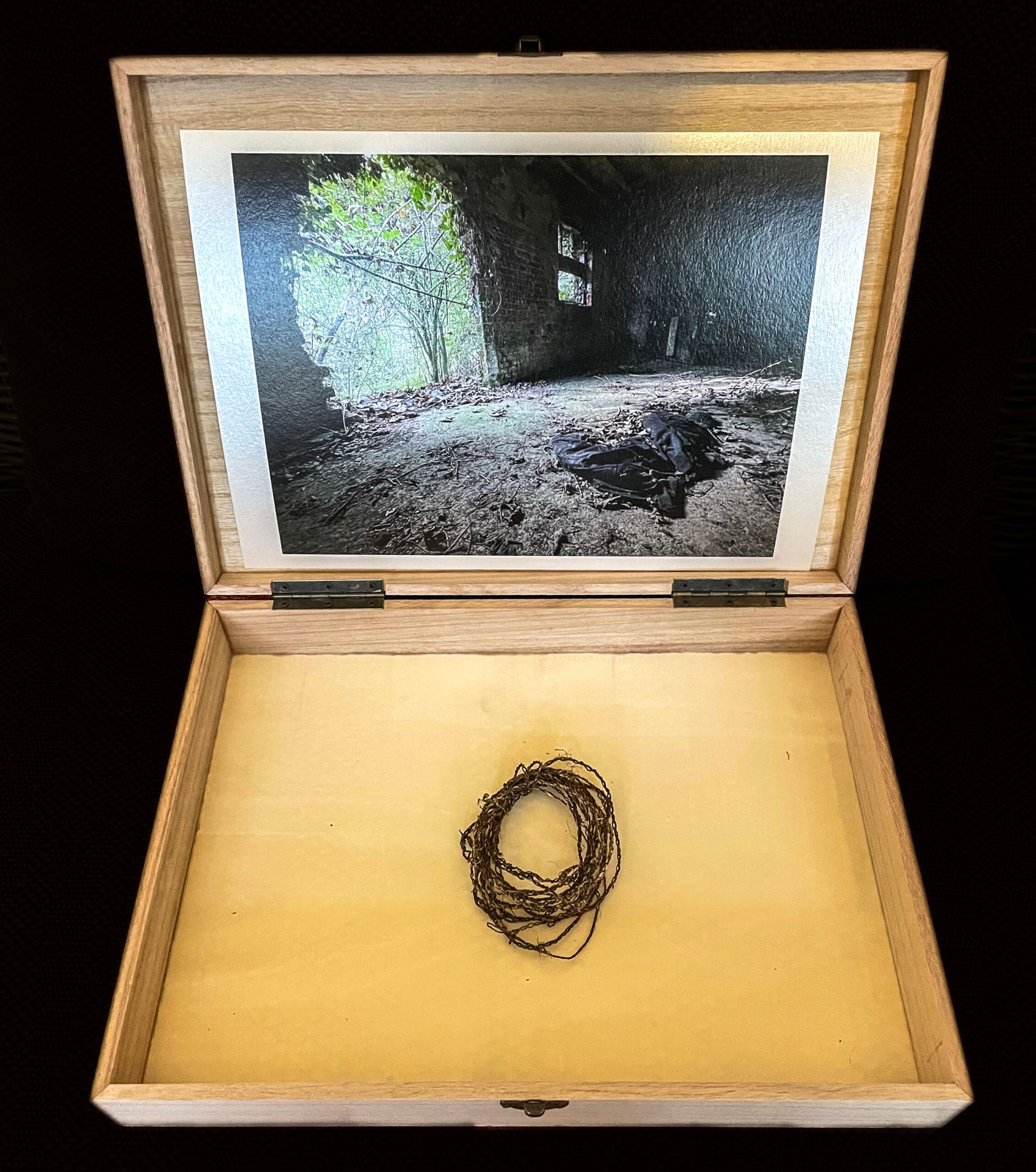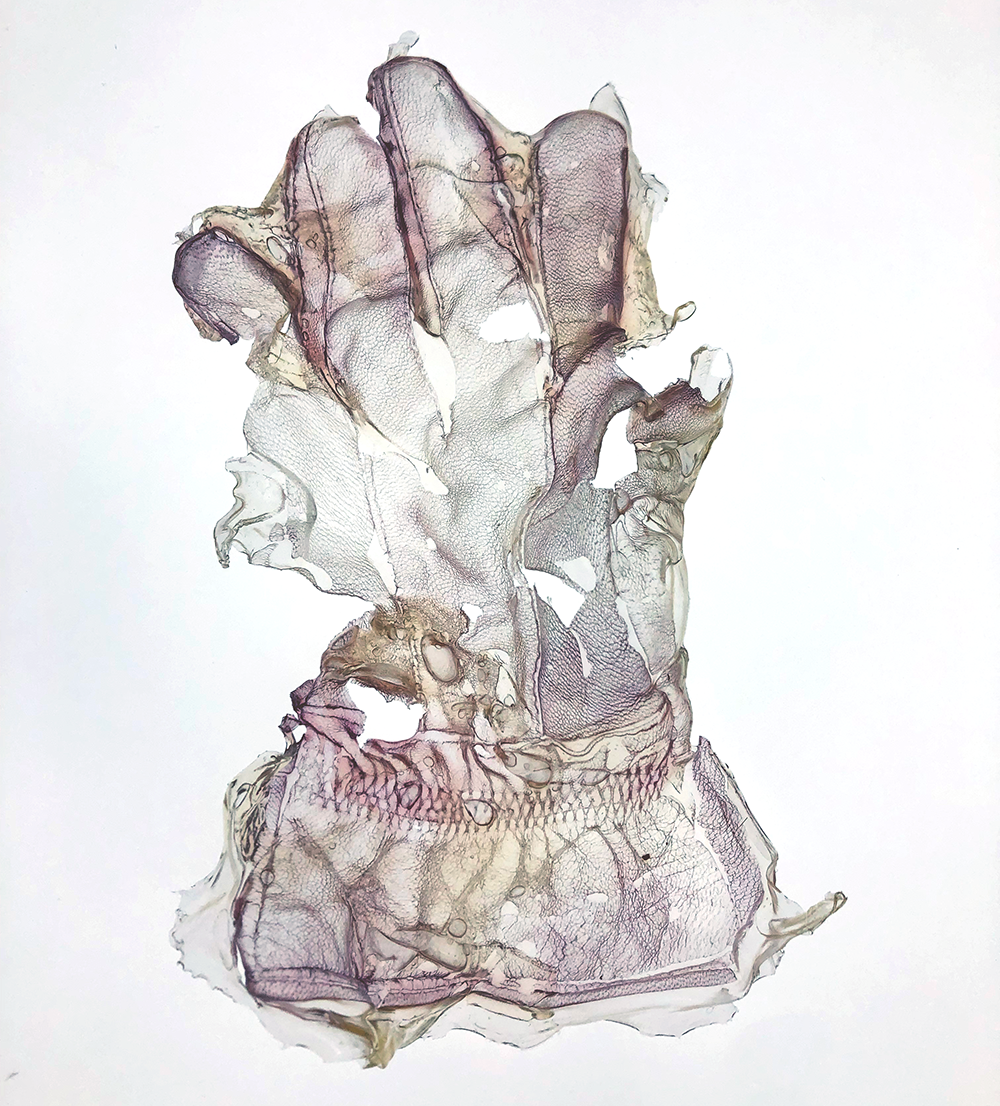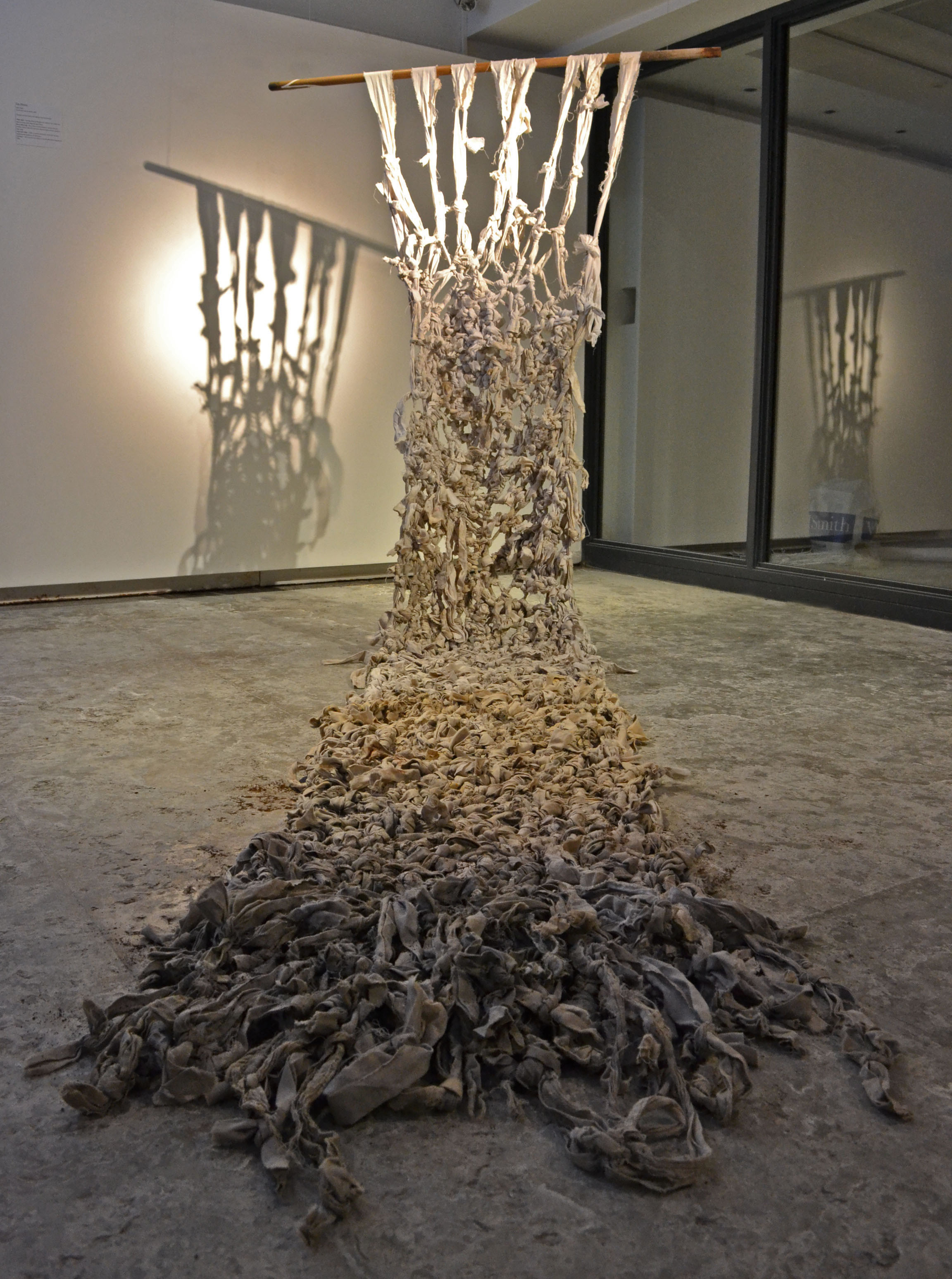Katie Taylor
Bound Up Material, 2021
Gelatine Bioplastic 5.5" x 10.5" x 4"
Exploring unidentified human remains by looking at clothing that forensic anthropologists use in the identification of the dead. Shoes embody the idea of transience, the use of gelatine bioplastic directly evidences the fragility of the dead body within the environment and returning it to the soil.
Katie Taylor
Kuboneka, 2022
Photographic image capturing the space left by absent clothing in a halo of evaporating water A3
In this particular work, I delve into concepts of presence and absence within the locations where the Tutsi experienced unspeakable atrocities during the 1994 genocide in Rwanda. The utilisation of a vacant piece of clothing and a mist of sprayed water that subsequently dissipates into the surrounding air beckons us to scrutinise our notions regarding the presence and absence of those who tragically lost their lives in those places.
Katie Taylor
Left like a Skeleton, 2024
Nettle cordage, photograph, wooden box 1 meter x 1 meter
During decomposition, soil becomes nutrient rich. This soil feeds plant material that grows taller than others, becoming observers of these deaths, quietly acknowledging and absorbing the individual, taking them into themselves. Each year they die back, to feed the soil again for the next generation of plants creating a cycle of presence at that site. Nettles have been key within forensic investigation and archaeological evidence shows nettles used in prehistory to make fabrics. Nettles are prevalent in nature, growing well in high nitrogen soils. Nettles are known by everyone but are almost always avoided because of their sting. This has powerful correlations with attitudes to outsiders, homelessness and unidentified death. Using nettles from the sites of unidentified deaths I halt the nettle from its natural cycle of growth and decay to investigate an individuality, Whilst making each there was a rhythm, like a heartbeat resulting in a commemorative relic.
Katie Taylor
Bound Up Material, 2021
Gelatine Bioplastic 5.5" x 10.5" x 4"
Exploring unidentified human remains by looking at clothing that forensic anthropologists use in the identification of the dead. Shoes embody the idea of transience, the use of gelatine bioplastic directly evidences the fragility of the dead body within the environment and returning it to the soil.
Katie Taylor
Lie Down, 2017
Cotton Fabric dyed with coffee 300cm x 70cm
Whilst doing research into forensic anthropology I became fascinated with its use in Bosnia to identify individuals within Mass Graves. This piece is a direct response to this research. ?Lie Down? is an exploration of the progression of the war in Bosnia. It is made from hundreds of torn strips of cotton and linen sheets and table cloths knotted together. During the beginning stages of the war in Bosnia, Muslim?s were expected to wear a white arm band and hang a white flag/sheet on their houses to show that they were Muslims. The top section of my piece is made from white strips of cloth. When segregating men from women, boys were selected and separated based on their height. Boys smaller than 150cm were allowed to remain with their mothers whilst those above 150cm had to leave with their fathers and were certainly sent to their death. My piece of work hangs at exactly 150cm. The lower section of the piece is naturally dyed in coffee. Coffee is a strong symbol of community in Bosnia. Before the war, Bosnian citizens would all drink coffee together whether Bosniak (Bosnian Muslim), Serb or Croat. After the war many Bosniaks (Bosnian Muslim) attempted to move back to their homes to find another family had moved in. They were often offered coffee in their own cups. The piece of work extends onto the floor referencing burial / mass graves / shrouds / death, and is titled ?Lie Down?, the last words spoken to many, before being shot. Forensic teams exhumed cloth ligatures and blindfolds across all of the mass grave sites at Srebrenica. These ligatures and blind folds were often from the same fabric source and this evidence was part of the proof for Genocide during the trials at The Hague




